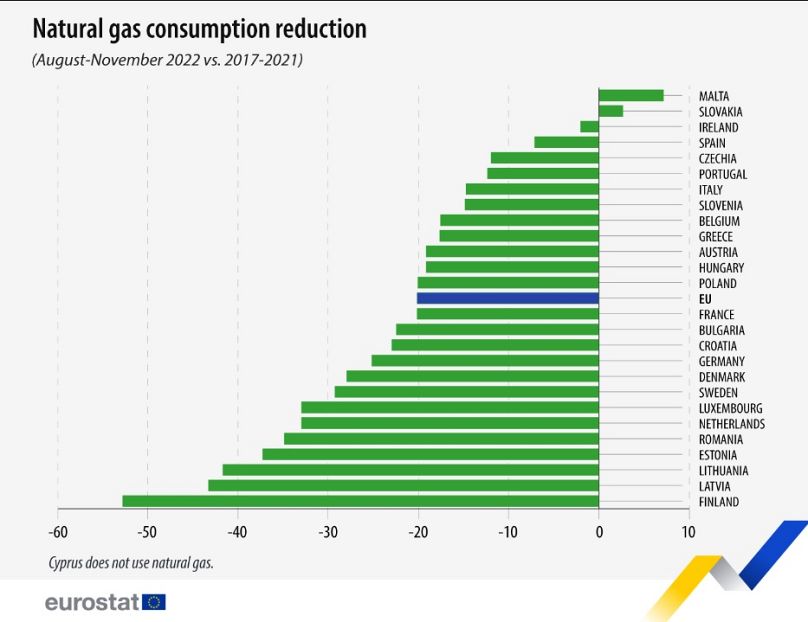EU gas consumption dropped by 20% before winter as most countries reach voluntary target
Consumption of natural gas in the European Union dropped by a fifth in the months leading to winter compared to the same period over the previous five years, according to Eurostat.
During the summer, EU nations committed to voluntarily reducing their natural gas use by 15% between 1 August 2022 and 31 March 2023 in a bid to fill gas storage up before winter and ride out the cold season after Russia turned off the main gas pipeline to the bloc.
The target is based on a worst-case scenario calculated by the European Commission in which Russia totally cuts off gas supplies ahead of or during an unusually cold winter.
Most EU countries have been successful, data from Eurostat released on Tuesday show.
Eighteen countries overshot the target with consumption in Finland dropping by 52.7% across the August-November period compared with the average gas consumption for the same months between 2017 and 2021.
Latvia and Lithuania also operated +40% cuts.
Six EU member states — Portugal, Czechia, Spain, Ireland, Slovakia, and Malta — failed to reach the target with the latter two actually increasing gas use by 2.6% and 7.1% respectively.
The savings were no doubt helped by a mild autumn.
But governments also set out energy reduction plans, urging people to keep heating at or below 19°C and air conditioning above the mid-20°C — gas is the EU's leading source for heating and is also used for electricity production to varying degrees.
They also, wherever possible, switched to alternative fuels and postponed the phase-out of nuclear energy or closures of coal plants.
To tackle skyrocketing energy bills, the bloc has meanwhile approved several measures including a joint purchasing platform to leverage its market size and green-lighted a cap on gas prices on Monday.
The temporary cap, which will come into force in mid-February, is unlikely to alleviate pressure on EU citizens and businesses this winter but is instead aimed at ensuring the bloc can source the energy supplies it needs at affordable prices before the next winter season.












